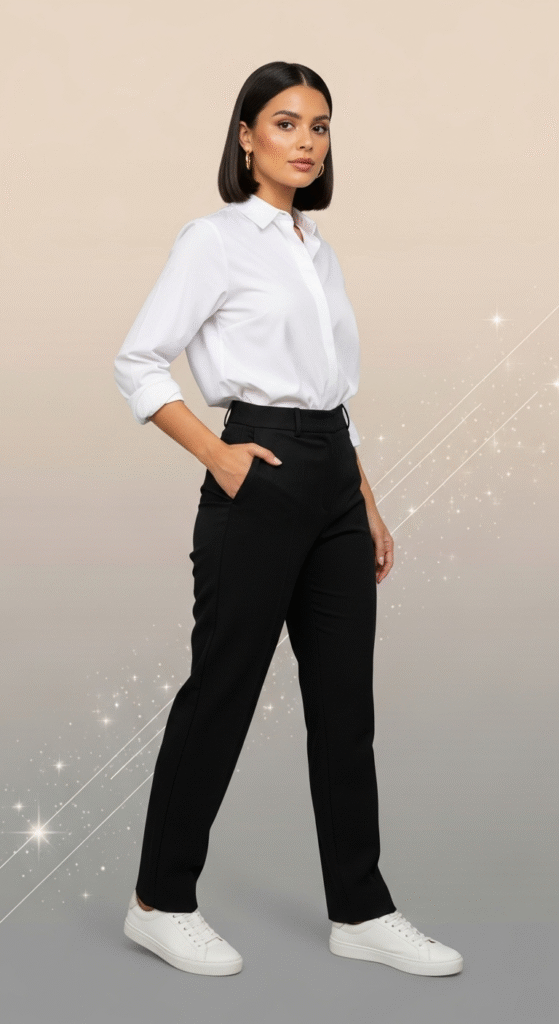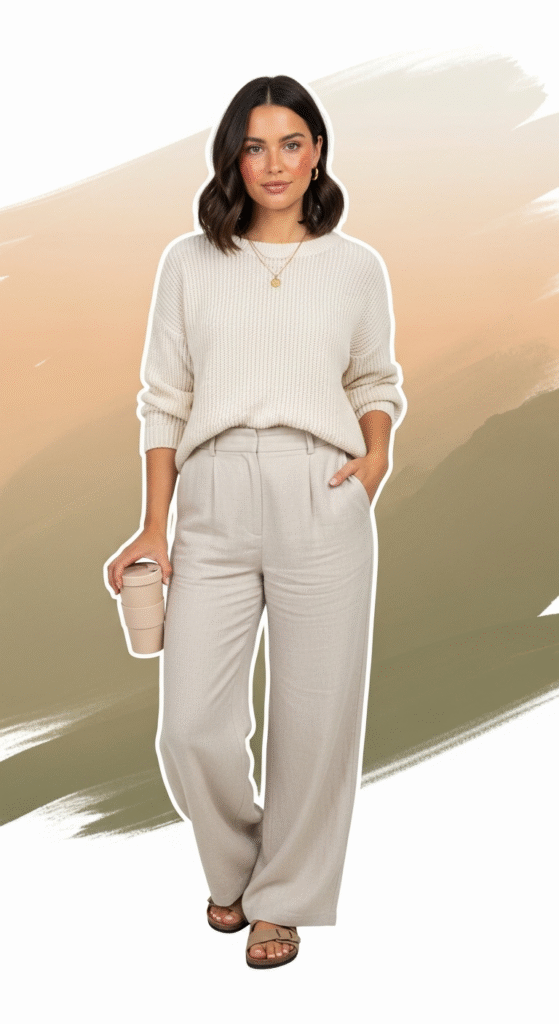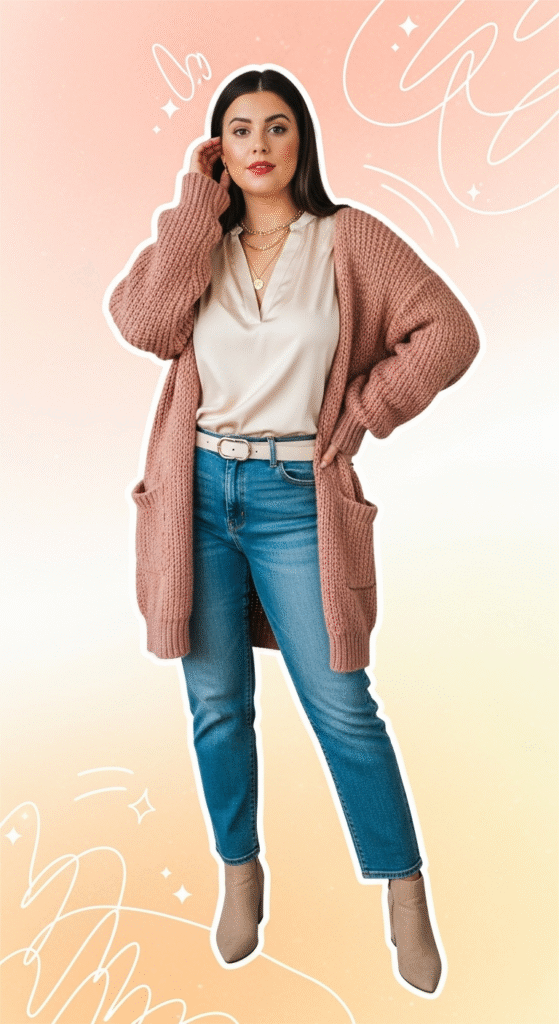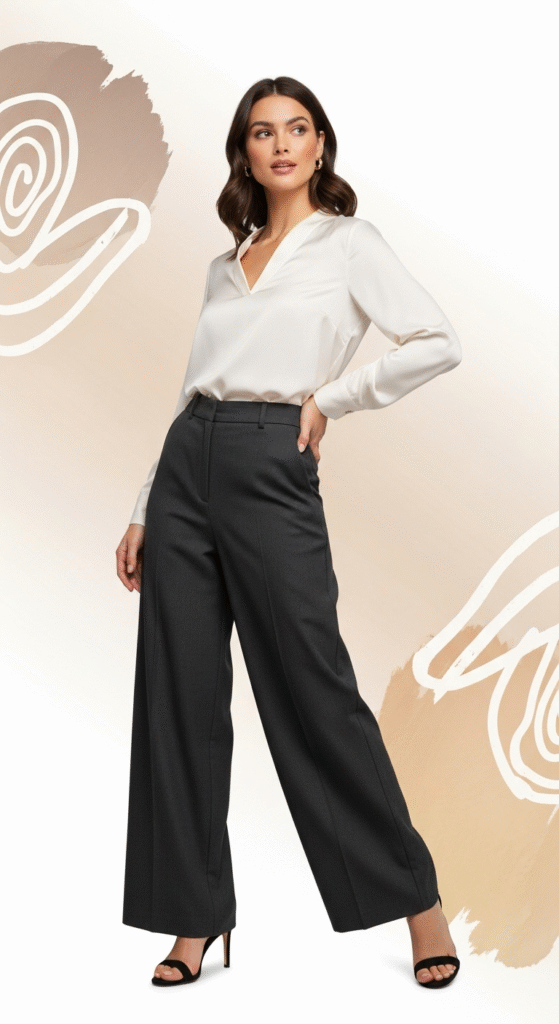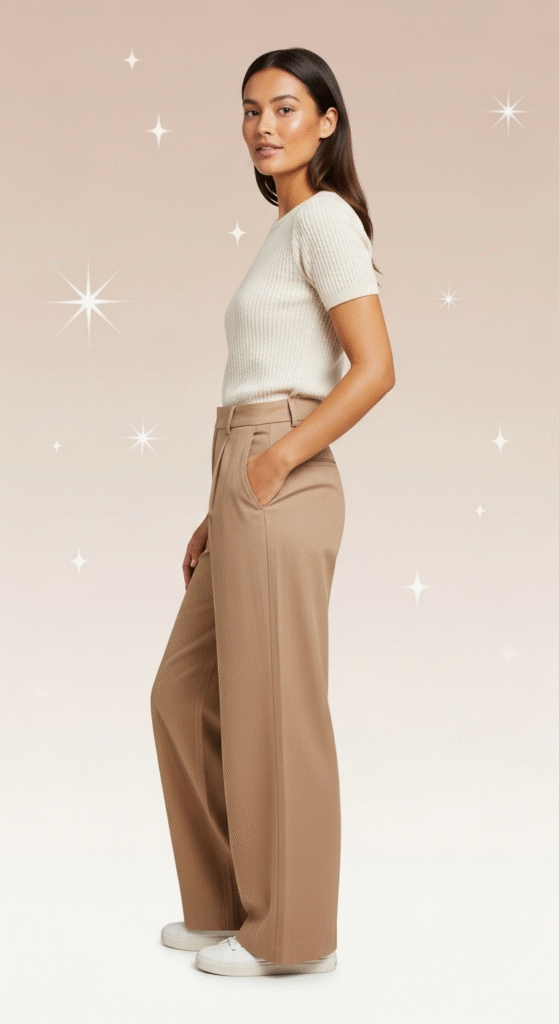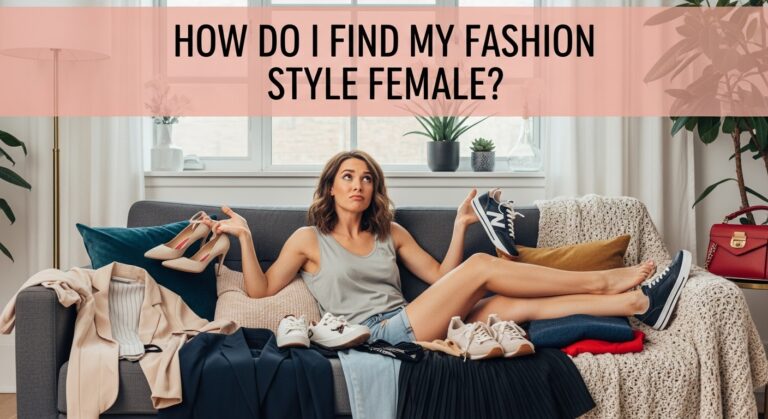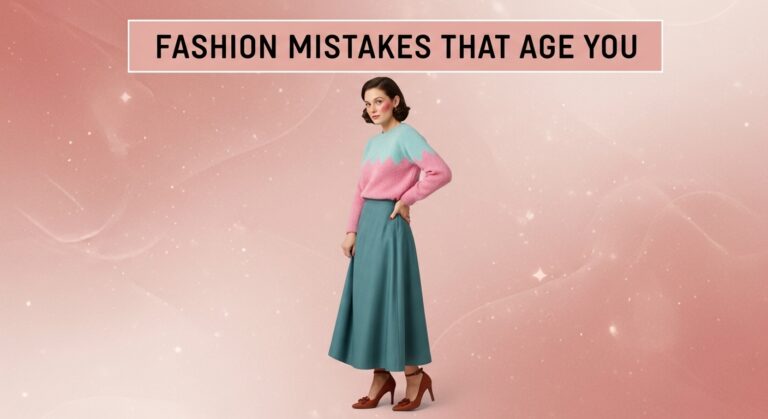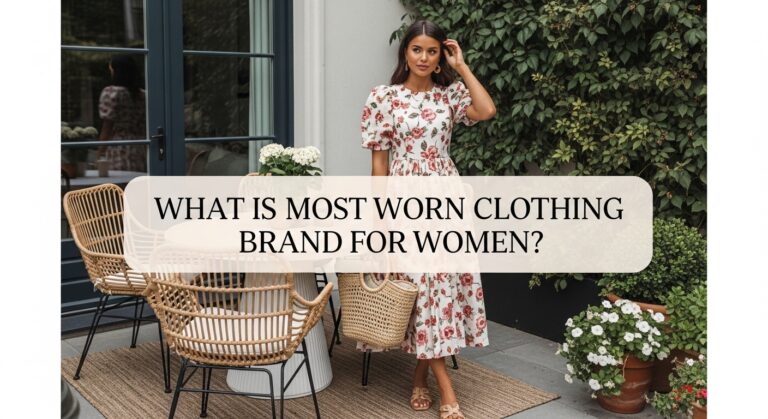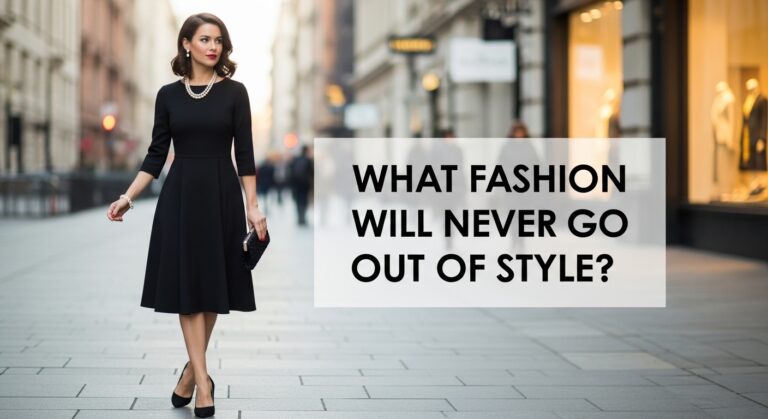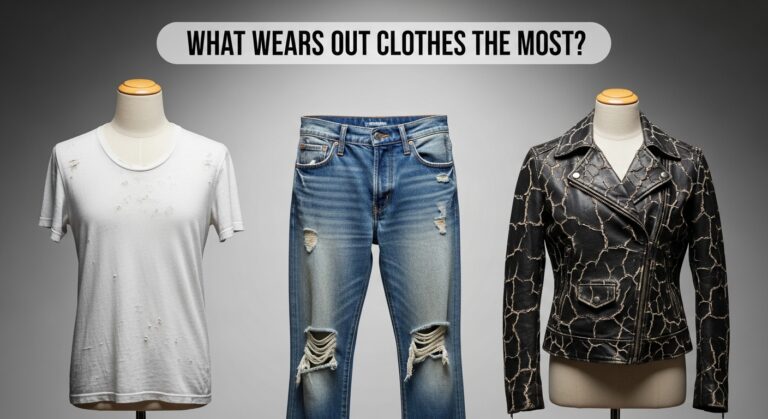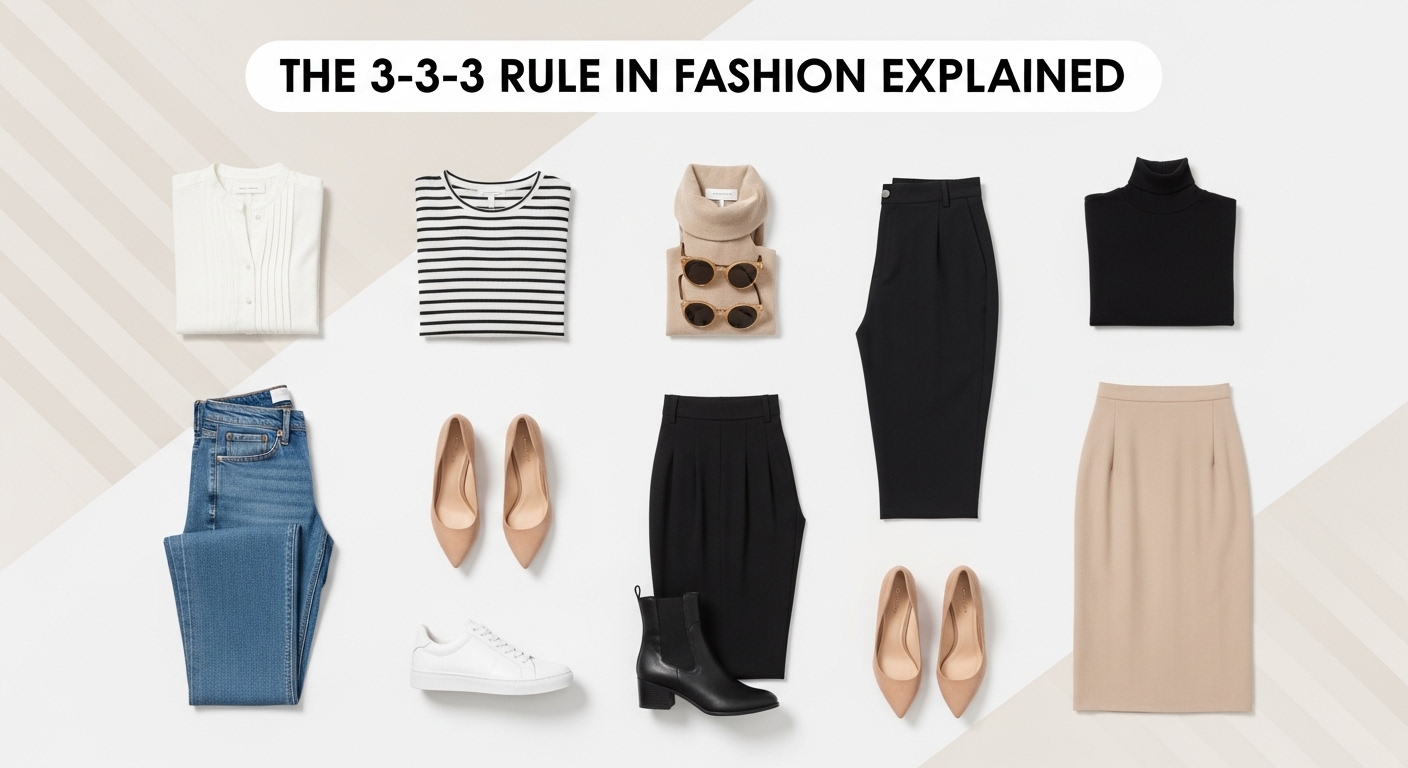
Every woman has faced that moment where the closet is packed full, yet nothing feels right to wear. The struggle is real, and it often comes down to choice overload. The 3-3-3 rule in fashion is a simple style method designed to solve this exact problem. It’s a wardrobe strategy that helps you dress with less, while still looking stylish and put-together every day.
The 3-3-3 rule means working with three tops, three bottoms, and three pairs of shoes for the next three months. This little formula creates a mini wardrobe capsule that not only simplifies your routine but also makes it easier to define your personal style. Many women love it because it removes decision fatigue while ensuring outfits always feel intentional.
Now let’s explore what the 3-3-3 rule really means, why women are using it, and how you can apply it to your own wardrobe to feel stylish without stress.
What does the 3-3-3 rule in fashion mean?
The 3-3-3 rule in fashion is a styling approach that encourages women to build outfits from only three tops, three bottoms, and three pairs of shoes for a set period of time, usually three months. It works like a capsule wardrobe but with a smaller, more manageable structure.
This rule is about maximizing versatility with minimal items. By carefully selecting pieces that can be mixed and matched, you end up with dozens of outfit combinations. For example, three tops and three bottoms alone can make nine different looks — and when you add three pairs of shoes, accessories, and layering pieces, the combinations expand quickly.
The goal isn’t restriction but refinement. Women often find that when their wardrobe is smaller, they naturally gravitate toward what truly feels good on their body and matches their lifestyle.
Why are women turning to the 3-3-3 rule?
Women are drawn to the 3-3-3 rule because it brings simplicity and confidence back into getting dressed. Instead of standing in front of a closet full of clothes feeling overwhelmed, this method creates a sense of clarity.
Research on decision fatigue shows that too many choices can make even simple tasks feel exhausting. Fashion is no exception. By narrowing down options, you remove stress and create space for enjoyment. The 3-3-3 rule works as a filter, making sure that everything in your wardrobe rotation is something you love and actually wear.
Another reason women embrace this rule is sustainability. The fashion industry produces over 92 million tons of textile waste every year, and limiting purchases through capsule methods helps reduce unnecessary shopping. It allows women to invest in fewer but higher-quality pieces, which often last longer and fit better.
How many outfits can you really make with the 3-3-3 rule?
At first, it might sound impossible that nine pieces could create variety, but the math shows otherwise. With three tops and three bottoms, you have nine combinations. When you add layering items like jackets or cardigans, the looks multiply. Then, switch between three pairs of shoes and accessories like scarves or jewelry, and you can easily reach 20 to 30 outfit options.
For example:
- A white blouse, black trousers, and loafers work perfectly for work.
- The same blouse with jeans and sneakers gives a casual, effortless look.
- Switch to heels with the jeans, and suddenly it’s dinner-date ready.
The beauty of this rule lies in its flexibility. You’re not stuck wearing the same outfit on repeat — instead, you’re mixing pieces to create fresh combinations without the pressure of constant shopping.
What types of pieces work best for this method?
The key to success with the 3-3-3 rule is choosing versatile clothing. Women often pick neutral tones like black, white, beige, or navy for at least some of their items, because they mix easily. But color can also be used strategically to show personality.
Tops like button-down shirts, fitted tees, or soft blouses pair beautifully with both skirts and trousers. For bottoms, a mix of jeans, tailored pants, and a skirt can cover casual, work, and dressy needs. Shoes should reflect your lifestyle — a comfortable pair of flats or sneakers, one pair of heels or boots, and a classic in-between option.
Accessories and outerwear aren’t limited by the rule, so they can bring variety without cluttering the wardrobe.
Is the 3-3-3 rule the same as a capsule wardrobe?
The 3-3-3 rule is a more specific and minimal version of a capsule wardrobe. A traditional capsule usually has 20–40 pieces, including shoes and seasonal items. The 3-3-3 method narrows this down to nine essentials for a three-month experiment.
For women who feel overwhelmed by the idea of building a full capsule wardrobe, the 3-3-3 rule serves as a gentler introduction. It gives structure without requiring a total closet overhaul. Many women start with this method and then naturally expand into a larger capsule once they see the benefits.
What are the benefits of the 3-3-3 rule in fashion?
Women who practice the 3-3-3 method often report benefits that extend beyond fashion itself.
It reduces decision fatigue because you already know your wardrobe is simplified. It saves money since you’re no longer impulse-buying items that don’t fit your style. It creates a stronger personal style identity because you see which pieces you reach for most.
Psychologists also suggest that decluttering closets can lower stress levels. A study from UCLA’s Center on Everyday Lives of Families found that women with more cluttered homes showed higher levels of cortisol, the stress hormone. A simplified wardrobe contributes to a calmer living environment.
And finally, it builds confidence. When every outfit you own feels flattering and wearable, you stop wasting energy on clothing regrets and start enjoying what you wear.
Can the 3-3-3 rule work for different lifestyles?
Yes, the 3-3-3 rule is highly adaptable. For women working in offices, it can be structured with tailored trousers, elegant blouses, and heeled shoes. For stay-at-home moms, it might be jeans, soft knit tops, and practical sneakers.
The method is about your lifestyle, not someone else’s. Many women adjust the formula to include dresses or jackets as part of their nine items, while others follow the rule strictly. The freedom lies in making it personal, while still keeping the structure that prevents overwhelm.
How do you start using the 3-3-3 rule in fashion?
Starting the 3-3-3 rule begins with a closet edit. Choose three tops you wear often and feel good in, three bottoms that fit multiple occasions, and three pairs of shoes that cover work, casual, and social needs.
Set those aside and commit to wearing only those pieces for three months. Keep the rest of your clothes in storage or at the back of your closet so they don’t distract you. During this time, notice how you feel. Do you miss certain items? Or do you find yourself enjoying the simplicity?
This method works best as a challenge. It doesn’t have to be permanent, but it teaches you a lot about your style preferences, what you truly value in clothing, and how much you really need to look polished.
Why does the 3-3-3 rule feel so freeing?
The reason this rule feels liberating for women is that it removes noise and clutter. Many women own closets filled with trends bought on impulse or items saved “just in case.” This creates stress instead of style.
When you have only nine key pieces to choose from, every outfit feels intentional. The structure brings clarity, and the freedom comes from not needing to overthink. Some women even describe it as a weight lifted, because suddenly their wardrobe feels like it works for them instead of against them.
Is the 3-3-3 rule only for minimalists?
The 3-3-3 rule isn’t limited to minimalists. While it fits naturally into a minimalist lifestyle, it works just as well for women who simply want less stress when getting dressed. You don’t need to identify as minimalist to benefit from it.
Think of it as a personal experiment. Even if you love shopping or following fashion trends, applying this rule for three months can show you which pieces you genuinely reach for and which ones you don’t. Many women are surprised to learn that they rely on the same core items over and over, regardless of how many clothes they own.
For some, it becomes a permanent style choice. For others, it’s a seasonal reset that helps bring clarity before reintroducing other items from their wardrobe.
Can I use the 3-3-3 rule for work outfits?
Yes, the 3-3-3 rule adapts beautifully to professional wardrobes. Women who work in office or business settings can choose items like tailored trousers, button-down blouses, and versatile shoes to make the method work for their needs.
For example, one woman might pick a white blouse, a neutral knit top, and a blazer-friendly shirt for her three tops. For bottoms, she could choose black trousers, a pencil skirt, and a pair of slim-fit pants. Shoes might include classic pumps, loafers, and ballet flats.
This small selection still creates multiple polished looks suitable for meetings, presentations, or daily office wear. With layering pieces like a blazer or cardigan, the variety increases even more. The rule makes it possible to dress stylishly for work without needing an overflowing closet.
A wardrobe rule that helps women dress with confidence and ease
The 3-3-3 rule in fashion is more than a styling trick; it’s a mindset shift. It reminds women that looking stylish doesn’t require overflowing closets or constant shopping. Instead, it’s about carefully choosing fewer pieces that feel authentic, versatile, and comfortable.
By adopting this method, women discover a balance between simplicity and self-expression. The outfits that come from it aren’t just about clothes — they’re about confidence, clarity, and enjoying the act of getting dressed again.

